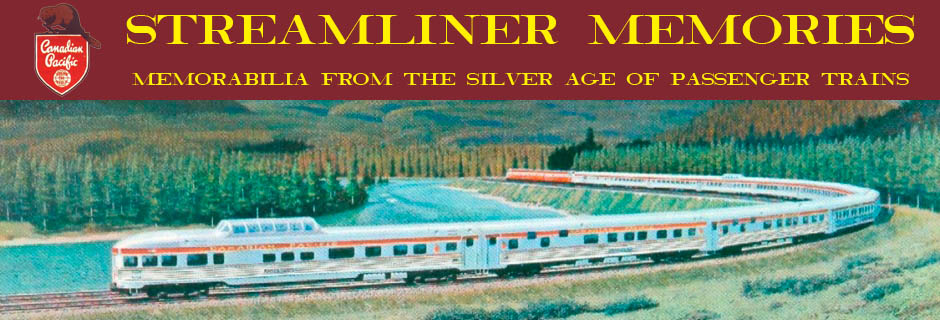The April 1955 timetable, which immediately preceded this one, featured the Pony Express on the page before the centerfold map as “No. 4 in a series devoted to historic landmarks.” As number 5 in the same series, today’s edition features the less famous but more economically successful Butterfield Stage Line, illustrated by John Keil.
 Click image to download an 25.2-MB PDF of this 48-page timetable.
Click image to download an 25.2-MB PDF of this 48-page timetable.
The Pony Express carried mail between St. Joseph Missouri and Sacramento, taking about 10 days for the trip and initially charging $5 for a letter when postage rates were 2¢ but required many weeks or months for the same trip. The Butterfield stage required 25 days to go between St. Louis and San Francisco, charging not more than $1 for a letter. The Butterfield operation had the advantage of a mail contract with the postal service and its stagecoaches could also carry passengers.
Led by New York entrepreneur John Butterfield, the Overland Mail Company began carrying mail from St. Louis to San Francisco in September 1858. With the outbreak of the Civil War, the company moved its route north between San Francisco and Salt Lake City. Eventually, that route was taken over by Ben Holladay, the “stagecoach king.”
The Pony Express began in April 1860 hoping that its speed advantage would allow it to compete with the stage. It only lasted until October 1861, mainly because the opening of a telegraph line in that corridor put it out of business. It is doubtful that either the Butterfield Stages or Pony Express ever made much money.
The page after the centerfold map advertises Texas as an ideal location for industry. Other 1954 and 1955 timetables used this page to promote industry in various states in Missouri Pacific territory.
The inside front cover advertises Missouri Pacific dome cars with an illustration showing unrealistically tall dome windows. The back cover promotes the Rail Travel Card, an early credit card accepted by more than 40 different railroads.
In contrast to the timetables from 1950 shown here in the past couple of days, most of the half-page articles are more ads than entertainment. Two of them decry government subsidies to inland waterways and the highway lobby that was promoting the bill that would create the Interstate Highway System. Others advertise Pullman or family fares. The half-page column telling histories of a few town names remains but the quiz is gone.
